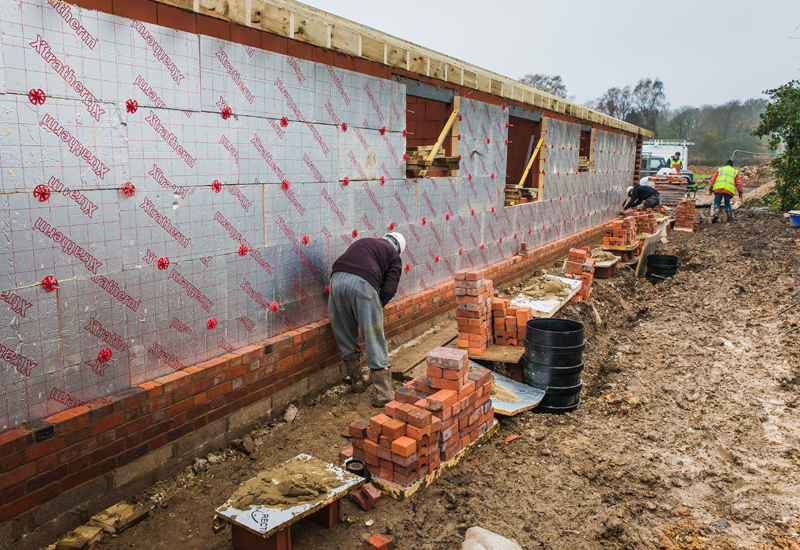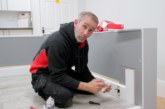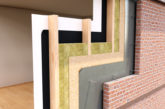
The risk of a home overheating can be influenced at various stages in the design and build process. William Wright of the Building Research Establishment explains how a decision tree helps to highlight the impact of various measures on home’s propensity to overheat.
Overheating in domestic premises can have a significant impact on the habitability of a dwelling and, critically, the occupant’s health. Overheating has been identified as a problem by the Zero Carbon Hub, NHBC Foundation and the Chartered Institution of Building Services Engineers (CIBSE). Overheating was the subject of my presentation at the recent CIBSE Technical Symposium, on which this article is based.
Reduce the risk
Overheating is an emerging problem, especially in small dwellings and flats and predominantly single-sided properties where cross ventilation is not possible. However, through an integrated approach, developers and designers can help reduce the risk of a dwelling overheating.
 CIBSE Guide A gives a precise definition for non-domestic buildings which can be used with thermal modelling software to determine whether overheating will occur in a space. This has been derived from statistics on how people experience overheating. For domestic buildings Guide A recommends a temperature limit of 26°C in bedrooms for any length of time. Beyond the more precise definitions, any unwanted heat within a building affecting thermal comfort can be regarded as an overheating event.
CIBSE Guide A gives a precise definition for non-domestic buildings which can be used with thermal modelling software to determine whether overheating will occur in a space. This has been derived from statistics on how people experience overheating. For domestic buildings Guide A recommends a temperature limit of 26°C in bedrooms for any length of time. Beyond the more precise definitions, any unwanted heat within a building affecting thermal comfort can be regarded as an overheating event.
In general developers and landlords face an increased risk of overheating as the result of: increases in building fabric energy efficiency and airtightness; a bias towards the construction of apartments, which are often built to smaller dimensions and in ever increasing densities; and increased ambient temperatures as the result of climate change.
According to CIBSE’s future climate data, based on Met Office climate projections UKCP09, even a medium-low increase in emissions over today’s value can be expected to result in an average temperature increase of over 1°C in London by the 2050s.
Overheating
Overheating occurs when the heat generated inside a building is greater than the heat rejected from it. It is an issue which affects apartments in particular. The factors which lead to overheating include:
- Environment: While the local environment of the building is generally not under the control of the developer it can significantly affect the ambient temperature. Using appropriate regional weather data files can reflect the temperature uplift for urban areas but there is an additional element due to the urban heat island effect and microclimate which can be significant.
- Heat Gains: These include solar and internal gains. Solar gains can be partially controlled by internal blinds or shutters. Internal gains come from people and appliances. In recent years internal gains from communal heating systems have also contributed to severe overheating in some apartment blocks in summer.
- Natural Ventilation: In most apartments natural ventilation is the primary means of heat rejection. The rate of ventilation must be great enough to offset the rate of heat gain. To achieve the high air flow rates windows must be sized to encourage natural ventilation. However, in some apartments, it is often impractical to open windows because of noise, pollution and security concerns.
- Mechanical Ventilation System Design and Maintenance: Air change rates far higher than those required to maintain air quality are necessary to prevent overheating. If mechanical ventilation systems are to be effective at removing heat they must be sized to provide sustained purge ventilation rates which is likely to require larger sizing for the ventilation system overall.
Occupant behaviour
In addition to these factors, the actions of the occupier can also significantly impact the risk of overheating. In winter, a designer might reasonably expect the occupant to keep the windows closed. However, in summer the ways in which occupant behaviour can lead to overheating are far less obvious, perhaps because occupants usually have less experience of dealing with overheating as an issue in the UK.
Overheating can be worse where occupants suffer from poor mobility and are unable to draw their curtains or lower blinds for shading, or where occupants are reluctant to shut out the sun because they place great value on allowing natural daylight to enter their home.
Occupants and their habits may change so it is useful to assess whether a building will overheat using a method based on typical occupant behaviour. The degree of overheating in a building can be estimated using building energy simulation models. This, however, is a time consuming and costly process and is unlikely to be practical for every dwelling. For this study we used a modified version of SAP Appendix P, the regulatory overheating risk calculation tool.
“The degree of overheating in a building can be estimated using building energy simulation models”
Decision tree
The study has enabled the BRE to produce an indicative decision tree for a top floor apartment built to the requirements of the Building Regulations for England 2012. The apartment is situated in the Thames region, it has a floor area of 60m2, with windows sized to 25% of treated floor area and aligned East-West.
The figure shows that location can be the dominant factor in whether dwellings overheat. While this is not necessarily under the control of a developer it does serve to highlight that overheating must be carefully considered if the dwelling is in an urban location.
The figure also shows that there is a clear break point between natural and mechanical ventilation, which can be influenced by concerns of noise nuisance, air pollution or security issues. Developers should be prepared to provide for adequate mechanical ventilation or to provide appropriate windows or louvres on ventilation openings if these are an issue.
Finally, the study showed that occupants keeping windows closed can have a dominant impact under natural ventilation scenarios – illustrating the importance of considering occupant behaviour and in the need to engage with occupiers to help minimise the risk of overheating.








